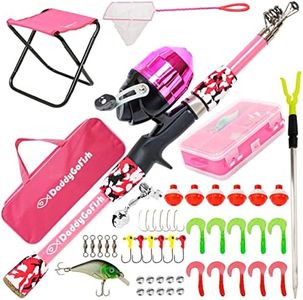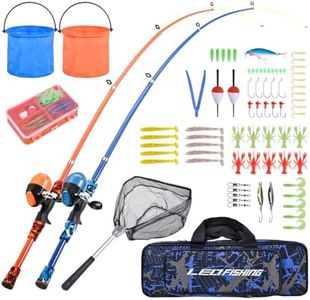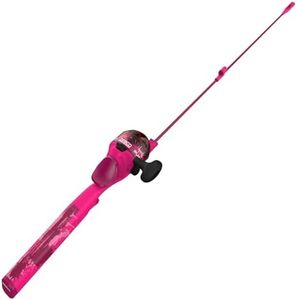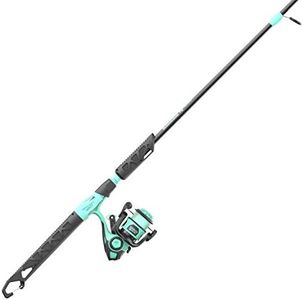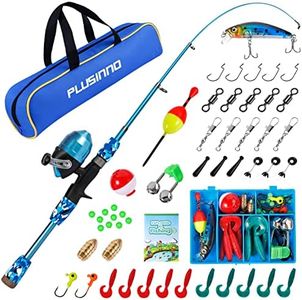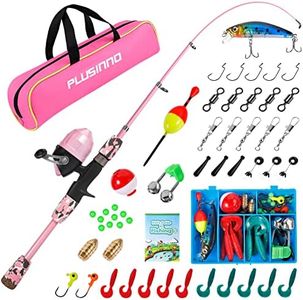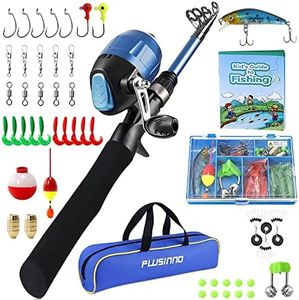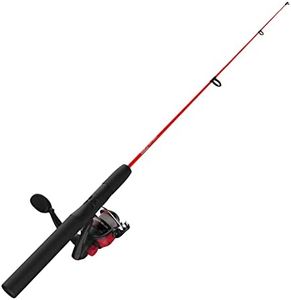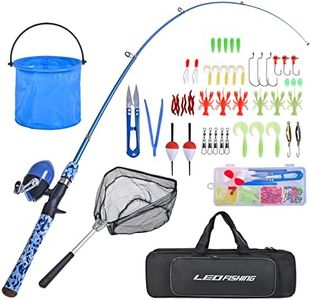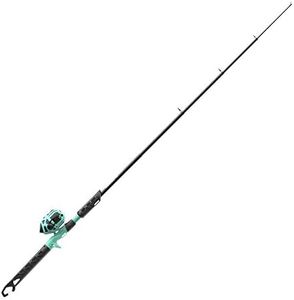We Use CookiesWe use cookies to enhance the security, performance,
functionality and for analytical and promotional activities. By continuing to browse this site you
are agreeing to our privacy policy
10 Best Kid Fishing Poles
From leading brands and best sellers available on the web.Buying Guide for the Best Kid Fishing Poles
Choosing a fishing pole for kids can be an exciting step in introducing them to the joys of fishing. It's important to focus on simplicity, size, and ease of use, as children need gear that is manageable, safe, and tailored to their abilities. Understanding the different features can help you select a pole that matches your child’s age, strength, and fishing environment, leading to a more enjoyable and successful fishing experience.LengthThe length of a fishing pole greatly affects how easy it is for a child to handle. Shorter rods—typically between 3 to 5 feet—are best for younger children or beginners since they are easier to control and won't feel overwhelming. Slightly longer rods up to 6 feet can suit older children who have developed better coordination. Picking the right length is about finding a pole your child can easily hold and maneuver without feeling clumsy, which encourages confidence and safety on the water.
WeightThe overall weight of the fishing pole should match your child’s size and strength. Lightweight poles are easier for kids to cast and hold for longer periods, which makes fishing more enjoyable and reduces fatigue. Materials like fiberglass or composite plastics are commonly light and durable, making them ideal for young anglers. Ensuring the pole isn’t too heavy lets your child maintain good control and keeps the experience positive.
Rod MaterialFishing rods for kids are usually made from fiberglass, composite plastics, or sometimes lightweight graphite. Fiberglass is sturdy and forgiving, perfect for youngsters who are still learning how to handle equipment and may be a bit rough. Composite materials balance strength with flexibility, while graphite rods are lighter but can be more expensive and sometimes more fragile. If your child is brand new to fishing or is likely to be rough on equipment, durable fiberglass or composite rods are a good bet.
Reel TypeFor beginner children, the reel type can make a big difference. Spincast reels (also known as closed-face reels) are the easiest to use, with a push-button mechanism that lets kids cast simply and without tangles. Spinning reels are a bit more advanced and require somewhat better coordination. If your child is just starting or is on the younger side, a simple spincast or even a no-reel pole (cane pole) can make learning much more approachable.
Grip Size and MaterialThe size and feel of the grip are essential in ensuring the fishing pole is comfortable in a child’s hands. Look for rods with smaller, padded, or non-slip grips made from foam or soft rubber. These materials give good traction and prevent the rod from slipping, making it easier and safer for children to hold, especially when their hands are wet. Trying out grips to see what feels best can help ensure your child enjoys holding and using the pole.
Line Weight and ActionLine weight and rod action together indicate how strong the pole is and what type of fish it can handle. For children, you'll want a light or ultralight action rod with corresponding light fishing line—usually between 2 to 6 pounds—which is perfect for catching small fish in ponds or lakes. This setup is forgiving and makes it easier for kids to notice bites and successfully reel in fish. Choosing a lighter action rod ensures the fishing experience stays fun and accessible without overwhelming young anglers.
Ease of AssemblySome kids’ rods come as one piece, while others may be telescopic or have a take-apart design. Telescopic poles collapse down for easier storage and travel, which can be helpful for families on the go. One-piece rods are sturdier but can be harder to transport. Considering where and how you’ll be using the pole can guide you—if you’ll frequently travel or store the rod in tight spaces, a telescopic or two-piece model may be best.

